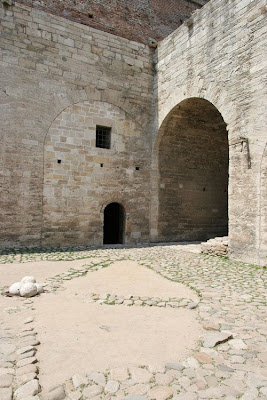Nesebar (or Nessebar) is situated on a rocky peninsula on the Black Sea, Bulgaria. This small piece of land (about 25 ha) is tied with a narrow rope-like neck to the continent. Its abundance of historic buildings prompted UNESCO to include Nesebar in its list of World Heritage Sites in 1983.
The most interesting sightseeing places are:
- fortress wall (built and used since 7th–6th century BC until 14th–15th century);
- more than 10 churches (Nesebar is sometimes said to be the town with the highest number of churches per capita);
- wooden houses built in the 19th century (typical of the Black Sea architecture of the period).

General view

Fortress wall

The Church of St Sophia or the Old Bishopric
(Stara Mitropoliya) (5th-6th century)

The Church of John the Baptist (11th century)

The Church of St Stephen or the New Bishopric
(Nova Mitropoliya)
(11th century; reconstructed in the 16th-18th century)

The Church of St Stephen (inside)

The Church of Christ Pantocrator (13th-14th century)

The Church of St John Aliturgetos (14th century)

Typical house

At night
Link: Unique Bulgaria: Старият Несебър (Bulgarian).























































